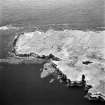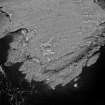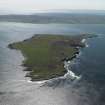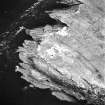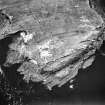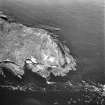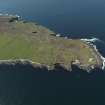Scheduled Maintenance
Please be advised that this website will undergo scheduled maintenance on the following dates: •
Tuesday 3rd December 11:00-15:00
During these times, some services may be temporarily unavailable. We apologise for any inconvenience this may cause.
Stroma, New Lighthouse
Lighthouse (19th Century)
Site Name Stroma, New Lighthouse
Classification Lighthouse (19th Century)
Alternative Name(s) Pentland Firth; Swilkie Point; Stroma Ii
Canmore ID 104143
Site Number ND37NE 12
NGR ND 35378 79215
Datum OSGB36 - NGR
Permalink http://canmore.org.uk/site/104143
- Council Highland
- Parish Canisbay
- Former Region Highland
- Former District Caithness
- Former County Caithness
ND37NE 12 35378 79215
Stroma Lighthouse [NAT]
OS 1:10,000 map, 1987.
For (predecessor) Stroma, Old Lighthouse (ND c. 353 792), see ND37NE 20.
Location formerly entered as ND 3537 7921.
Name: Stroma II (1896)
Location: N58 42 W3 07 Pentland Firth, 5 miles NW of Duncansby Head
Designed and built: D A Stevenson
Light first exhibited: 1896
Description: Circular stone tower, painted white
Height of light above MHW: 105ft (32m)
Height of tower: 76ft (23m)
Light source and characteristics: W Gp Fl ev 20 secs. Metal halide lamp: 1,000,000 cp: 26nm nominal range
Fog warning apparatus: Horn (2) ev 60 secs
Manning: watched (helicopter transfer from Stromness)
Lens from Sule Skerry lighthouse (HX62SW 1) installed during automation; scheduled for automation March 1996
C Nicholson 1995.
This major lighthouse was built (as part of an extensive programme of construction works around northern Scotland) by D A Stevenson, and was first lit in 1896. It suffered aerial attack in 1941 and was administered as a shore station until 1961, being a rock station thereafter. The light was electrified in 1972, using a sealed-beam system with a maximum power of 1,100,000 cp; it was automated in 1996.
This light succeeded an unmanned minor light of 1890, which was itself of significance as one of the first two around Scotland to use 'scintillating' lights of the Trotter-Lidberg type, with lythene (petroleum spirit) as fuel. The location of this structure is unknown but it may have occupied the same site.
Information from RCAHMS (RJCM), 23 August 2001.
R W Munro 1979; K Allardyce and E M Hood 1986; K Allardyce 1988.
















